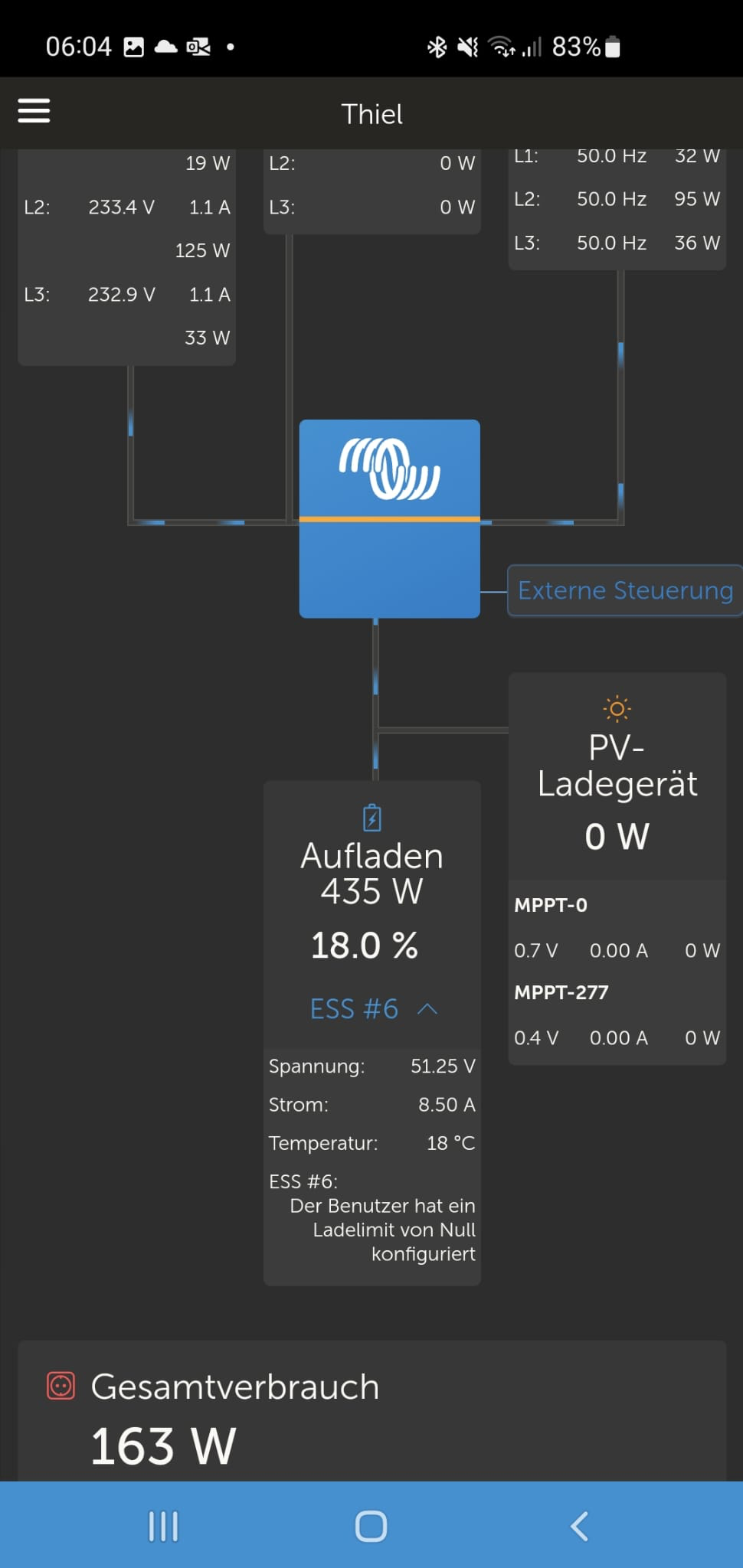Hello,
I recently got my system ( 3P MultiPlus-II 48/5000/70-48, 3x Voltsmile V10, SmartSolar MPPT VE.Can 250/70 rev2 & SmartSolar Charger MPPT 150/35, 2x Deye SUN-M80G3-EU-Q0, 1x Deye SUN-M80G3-EU) installed. Due to the bad weather I ran into a problem, when the battery reaches minimum SoC it gets charged from the grid. When it changes to chraging, the SoC instantly jumps by ~5% and 10 seconds later the battery is in discharge again with another jump of -5% SoC. Then this repeats around 20 seconds to 1 minute, depending on the load.
How can I generally disable charging from the grid.
I found the solution with setting in DVCC "limit charge current" to 0A and 'feed in excess DC PV power' to keep charging from MPPTs with no limit. With this the battery is marked with ESS #6 an should not be loaded from the Multiplus.
But I think with this charging from the AC coupled inverters (all at AC OUT) wont work as the Multiplus will never charge the battery due to the limit. Unfortunatly due to the weather I was not able to verify this.
Is ther a way to only disable charging from the AC-In but allow charging If I have excess power from the AC coupled PV inverters.
I tried looking for this but only found the DVCC solution.

